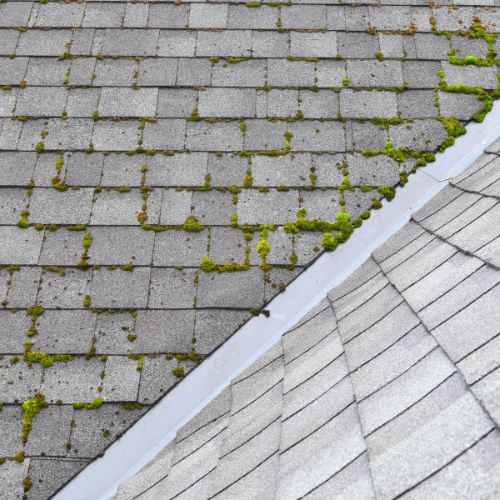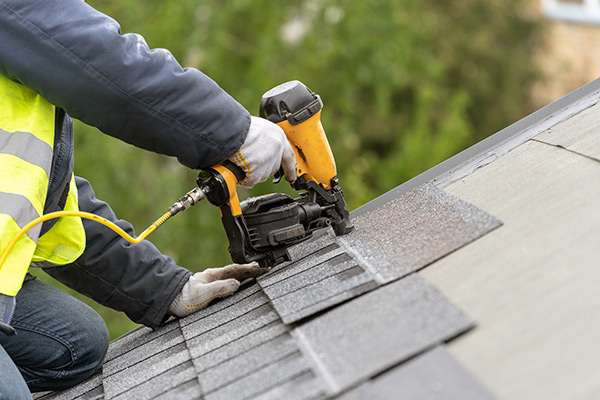Explore Reliable Roofing Solutions at Keep Dry Roofing in Chesterfield MO.
Explore Reliable Roofing Solutions at Keep Dry Roofing in Chesterfield MO.
Blog Article
Comprehending the Various Types of Roof
Understanding the different types of roof is critical for anyone involved in building and construction or home improvement. Each roof alternative, from the cost-effective asphalt tiles to the sophisticated slate and floor tile selections, presents distinctive benefits that cater to various needs and preferences. Metal roofing sticks out for its toughness and energy efficiency, while flat roofing systems use flexibility. Additionally, the emergence of green roof covering options highlights a growing concentrate on sustainability. As we explore these selections, it comes to be clear that the ramifications of picking the right roofing system extend far past mere visual appeals.
Asphalt Shingles
Asphalt tiles are just one of the most widely made use of roof covering products in household building and construction, prized for their durability and cost-effectiveness. Composed largely of a fiberglass or organic floor covering covered with asphalt and granules, these roof shingles supply a dependable obstacle against weather condition aspects while using a variety of aesthetic alternatives.
The installment procedure of asphalt shingles is fairly uncomplicated, making them a popular option among professionals and property owners alike. They can be set up over existing roof covering materials in most cases, minimizing labor prices and project time. Additionally, their lightweight nature minimizes the architectural tons on a home, making them suitable for most household buildings.
Asphalt roof shingles can be found in two major types: three-tab and architectural. Three-tab tiles are less complex and a lot more affordable, while building roof shingles offer a more dimensional look and enhanced durability. Their life-span normally varies from 15 to thirty years, depending upon the quality and environment conditions.

In addition, asphalt tiles are available in a broad selection of shades and styles, enabling house owners to tailor their roofing systems to enhance their home's outside. This versatility, together with their price, solidifies asphalt roof shingles as a leading choice in roof.
Steel Roof Covering
Metal roof covering has gotten appeal in the last few years as an option to conventional materials like asphalt shingles, using a series of benefits that attract both homeowners and builders. Keep Dry Roofing in chesterfield MO. Among the key benefits of metal roof is its exceptional durability. Metal roof coverings can hold up against severe climate condition, consisting of hefty rain, snow, and high winds, commonly enduring 40 to 70 years with proper maintenance
In addition, steel roofing is lightweight, which lowers the structural lots on buildings and can convert to financial savings in building expenses. The energy efficiency of metal roof coverings is another substantial advantage; they mirror solar convected heat, which can help lower cooling expenses, specifically in warmer environments.

Finally, the installment process for steel roofings is typically quicker contrasted to other roof covering materials, minimizing disturbance throughout building. Overall, metal roof offers a robust, effective, and fashionable alternative for modern building projects.
Slate and Tile
Exactly how do slate and ceramic tile roofing systems compare to other materials in regards to long life and visual allure? Slate and tile roofing systems are renowned for their exceptional resilience and read this article classic appeal. Commonly lasting over 50 years, slate roofs can even withstand for greater than a century with proper maintenance, far exceeding the life expectancy of lots of other roof covering products. Tile roofs, often made from clay or concrete, likewise supply excellent durability, generally lasting in between 40 to 50 years.
Visually, both slate and ceramic tile provide a special charm that enhances building styles, ranging from traditional to modern. Slate provides an advanced, natural look with its abundant colors and textures, while ceramic tiles been available in numerous forms and hues, enabling functional design alternatives.
In regards to maintenance, both systems may need specialist installation and periodic examinations to ensure their stability, especially in extreme weather condition. Though they feature a greater in advance price, the long life and aesthetic charm of slate and ceramic tile roofing systems often result in long-lasting worth. To conclude, slate and floor tile roofing not just offer toughness yet likewise elevate the aesthetic appeal of any home.

Apartment Roof Covering Equipments
Level roof covering systems are becoming progressively prominent for both residential and commercial structures as a result of their functionality and modern visual. Keep Dry Roofing in chesterfield MO. These roofs offer a seamless and practical room that can be utilized for numerous purposes, such as roof gardens, terraces, or added storage space
Generally created using products like customized bitumen, EPDM (ethylene propylene diene monomer), or TPO (polycarbonate polyolefin), level roofing systems website link are made to be resilient and weather-resistant. The low-slope layout permits easier setup and upkeep contrasted to pitched roofing systems, making them an attractive option for building contractors and home owners alike.
Among the considerable benefits of level roof is their cost-effectiveness. The materials utilized often tend to be less pricey, and the simplified building and construction procedure can reduce labor expenses. Furthermore, level roofings enable reliable water drainage systems, lessening water pooling and minimizing the danger of leaks.
Nonetheless, it is important to make sure appropriate insulation and waterproofing in level roof covering systems to prevent prospective problems. Regular assessments and upkeep are also vital to prolong the life of the roofing and maintain its integrity in time. On the whole, flat roof systems represent a sensible option for modern-day style.
Environment-friendly Roofing Options
Environment-friendly roof alternatives have become a lasting alternative to conventional roofing systems, straightening well with the growing emphasis on green construction practices. These systems generally involve the installment of living plant life on roofs, which can be extensively classified into extensive and intensive green roof coverings.
Comprehensive green roofs include a lightweight soil layer and drought-resistant plants, making them appropriate for household and low-traffic areas. They call for minimal maintenance and provide advantages such as improved insulation, stormwater administration, and boosted urban biodiversity. On the various other hand, extensive environment-friendly roofings involve deeper soil and a wider selection of plant species, consisting of hedges and small trees. These systems can fit entertainment rooms but necessitate more architectural support and continuous maintenance.
The benefits of eco-friendly roofing extend past aesthetic appeals; they add dramatically to power efficiency by reducing warm absorption, thereby reducing cooling prices. They boost air quality and offer habitats for city wild animals. As cities continue to increase, integrating eco-friendly roof options not only addresses environmental concerns however also advertises lasting city advancement, making them an increasingly preferred selection among designers and home builders.
Verdict
In recap, the diverse types of roof covering systems readily available offer unique benefits that cater to different requirements and preferences. Flat roof covering see this website systems existing versatility, and eco-friendly roof alternatives advertise ecological sustainability.
Report this page